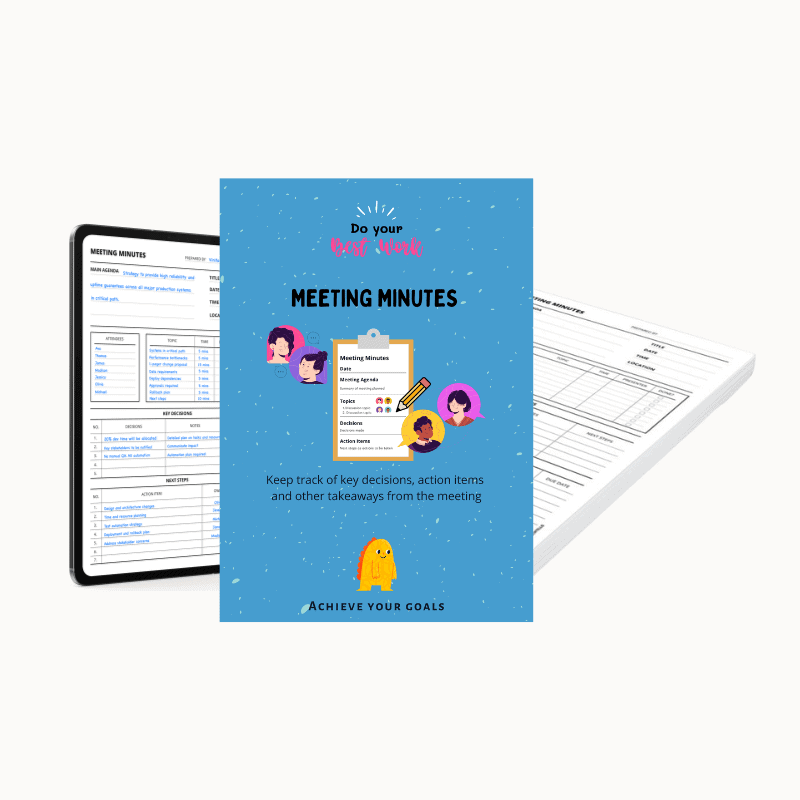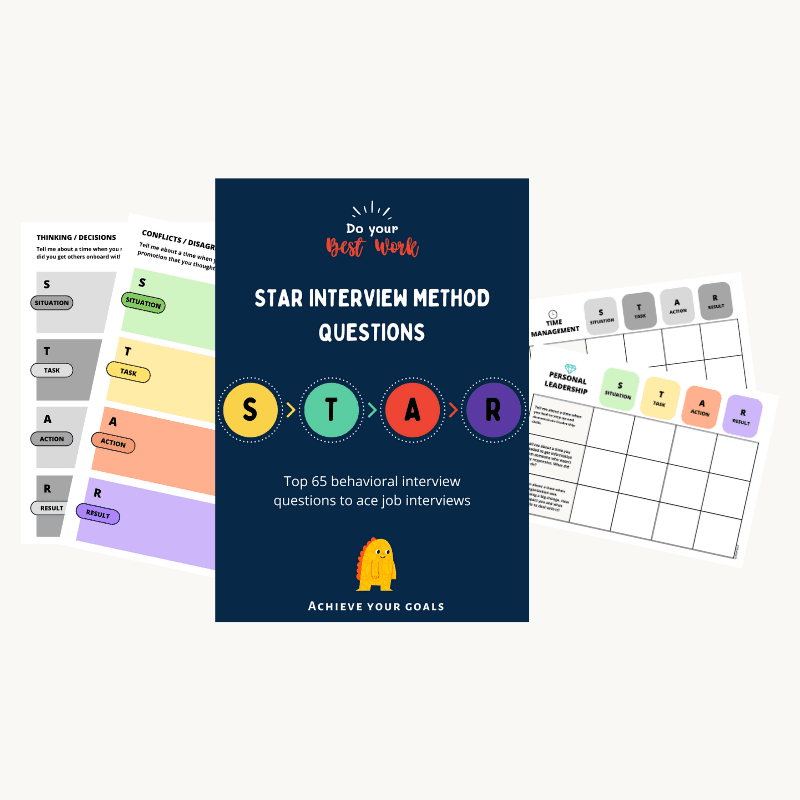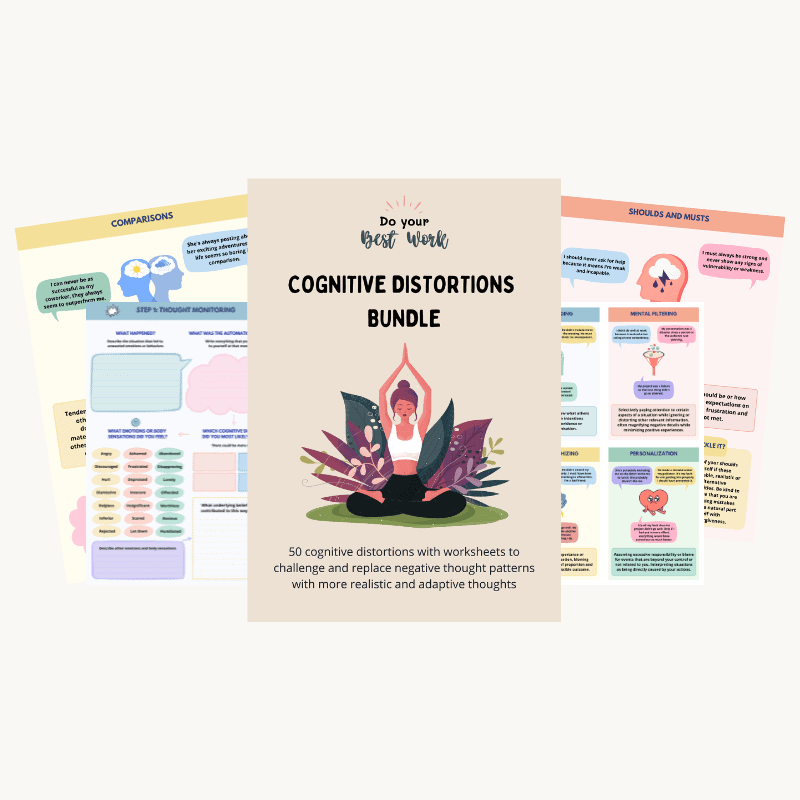9 Powerful Behaviors of Highly Effective Leaders That Sets Them Apart

What makes some leaders produce excellent work while others barely do a part of their job?
Leaders are entrusted with great responsibility. How they behave and act has a large impact on the organization and its people. Competence, knowledge and skills are important to become a leader, but how those things are put to use matters as much.
When leaders aren’t conscious of their time, let fear guide their decisions, worry about being disliked, and use excuses to delay or put off things that need their time and attention, they fail to do their job. Their behaviors push the organization back instead of lifting it up.
Effective leaders, though rare, are inspirational. They bring people together and enable them to collectively achieve great things together. They put the welfare of the organization and their people above their own self interests.
Here are the 9 behaviors I have observed in my career that sets effective leaders apart:
They aren’t afraid to challenge the status quo
Leaders who play safe do things the way they have always been done. Afraid to challenge, insecure to take risks and lack of confidence prevents them from exploring anything that’s outside their comfort zone. They shut down innovative ideas, better ways to solve problems and even new practices that can be a game changer for their organization and their team.
Copy pasting past knowledge without questioning it or showing resistance towards new ideas and beliefs keeps them locked in a cycle of ineffectiveness and inefficiency.
Effective leaders are risk takers. They defy conventional wisdom and challenge outdated beliefs and practices. They aren’t afraid to disagree, assert their opinion or make bold decisions that are necessary for growth and progress. Thinking ahead makes them think differently. They’re able to adapt to the future.
The true mark of a leader is the willingness to stick with a bold course of action — an unconventional business strategy, a unique product-development roadmap, a controversial marketing campaign — even as the rest of the world wonders why you’re not marching in step with the status quo. In other words, real leaders are happy to zig while others zag. They understand that in an era of hyper-competition and non-stop disruption, the only way to stand out from the crowd is to stand for something special.
— Bill Taylor
Effective leaders don’t try to fit in, they stand out.
They are willing to make unpopular decisions
Leaders make 100s of decisions throughout the day—some significant and others inconsequential.
Leaders who focus on earning likes and being nice go with popular decisions even though such decisions may not be impactful or give them the desired results. Nodding yes to others even when they disagree or keeping quiet with the fear of being disliked leads to poor choices and bad decisions.
These leaders also don’t pay attention to their biases:
- They stick with their opinion and reject all contradicting evidence.
- Within certain social contexts, choose what’s easy over what’s right.
- Optimize for short term pain at the cost of long term gain.
- Keep investing in sunk costs and refuse to rethink their bad decision to protect their ego.
Truthseeking, the desire to know the truth regardless of whether the truth aligns with the beliefs we currently hold, is not naturally supported by the way we process information. We might think of ourselves as open-minded and capable of updating our beliefs based on new information, but the research conclusively shows otherwise. Instead of altering our beliefs to fit new information, we do the opposite, altering our interpretation of that information to fit our beliefs.
— Annie Duke, Thinking in Bets
Effective leaders don’t like to be part of a popularity contest. They know that it’s their job to make hard decisions even if those decisions make them unpopular or get them some stares in the short term.
They are also very tactful—they know which decisions to let go and let others have their way and when they need to put their foot down and refuse to compromise.
They make better decisions by:
- Encouraging disagreements and conflicting opinions and paying attention to them.
- Being highly aware of their biases.
- Not tying decisions to outcomes.
- Not copy pasting past success.
- Factoring both data and intuition into the process.
Effective leaders don’t optimize for popularity, they optimize for making better decisions.
They don’t let urgency eat up into their priorities
Leaders who are always involved in solving urgent issues—putting out fires, handling a customer complaint, delayed delivery etc—react to what comes their way instead of consciously spending time on things that are crucial for an organization’s growth in the long term.
Reacting to urgent tasks while pushing important work aside makes them solve short term problems at the cost of more future oriented, forward looking activities. More and more urgent issues keep cropping up which wastes everyone’s time and energy.
Effective leaders are very conscious of how and where they spend their time. They’re highly proactive about strategic thinking, planning and reducing time wasting urgent activities.
Aligning their time and energy with the future goals of the organization reduces urgent issues, pushes the organization forward and makes employees feel happy and motivated.
They use the Eisenhower matrix to plan and prioritize important work on their calendar and ensure it gets done. In doing this, delegation is a big part of their strategy. It not only frees up their time to be effective in their role, it also gives great opportunities to their team to step up and take bigger and better responsibilities.
An effective leader must step back, look at the big picture, and make sure the important things are not being pushed out of the way by the seemingly urgent needs of the moment.
— Ken Blanchard, The Heart of a Leader
Effective leaders plan their time well, not take it for granted.
Eisenhower Productivity Planner Worksheet
Organize your to-dos and clear out unnecessary tasks with the help of this powerful planner.
They don’t attend meetings that aren’t worth their time
Leaders whose calendars are packed with back to back meetings are bound to be busy. Packed calendars make them feel important. They feel valued. They justify their busyness by saying “I am so busy. I have important things to say and do. I must be adding value.”
A Leader’s role may demand them to attend a lot of meetings, but not all meetings are worth their time. Busyness creates an illusion of productivity. They spend a lot of time working without creating value. It also saves them from the discomfort from doing hard things—things that will move them forward but require them to step outside their comfort zone. Being busy with meetings is then the perfect excuse to avoid doing the work they fear or find particularly difficult to do.
Effective leaders don’t attend a meeting just because others invite them to it and they don’t schedule a meeting for things that can be discussed and solved over an email, chat, or a phone call.
Less meetings are not only less taxing on their schedule, they give them the mental space needed to do quality work.
They apply the 80-20 rule to meetings—only 20% of your meetings account for 80% of your results.
Richard Koch explains the 80/20 principle this way “The 80/20 Principle asserts that a minority of causes, inputs or effort usually lead to a majority of the results, outputs or rewards. Taken literally, this means that, for example, 80 percent of what you achieve in your job comes from 20 percent of the time spent. Thus for all practical purposes, four-fifths of the effort – a dominant part of it – is largely irrelevant. This is contrary to what people normally expect.”
Effective leaders optimize their meeting time using these steps:
- Delegate: Identify which meetings are worth attending. Are these meetings only you can do? Which meetings can you delegate? Who else can take your place?
- Declutter: Which meetings are not even required? Strike them off.
- Reduce: Which of your meetings go beyond 30 mins? Why do they need so much time? Do you have weekly or biweekly meetings whose frequency can be reduced?
- Attend: Highlight the ones that are absolutely important and only you can attend.
Effective leaders make better decisions with less meetings, not more.
They do the right thing instead of trying to be right
Leaders who want to be right try to prove their smartness. They show off their brilliance by being the person with all the answers.
Thinking it’s their job as a leader to know everything makes them too afraid to admit ignorance. They never say “I don’t know” because saying it might expose them to others who will consider them unsuitable and unworthy of their position. Failing to admit they’re wrong or they don’t know something leads to poor choices and terrible decisions.
Effective leaders don’t think this way. They know they aren’t perfect or have superhuman qualities. Much like everyone else, they too are learning and growing and don’t have answers to all the problems at work.
They don’t let their lack of knowledge or a gap in their understanding get in the way of making the right decision. They may not know the answers themselves, but they have the great ability to find those answers.
They do the right thing by:
- Acknowledging when they are wrong or when they don’t know something.
- Seeking diverse opinions and evaluating different options.
- Choosing the best option irrespective of who suggested it.
Effective leaders consider vulnerability as a strength, not weakness.
Vulnerability sounds like truth and feels like courage. Truth and courage aren’t always comfortable, but they’re never weakness.
— Brené Brown, Daring Greatly
They address the root cause instead of solving superficial problems
Leaders who rush to solve issues don’t pay attention to the real problem. Desire to solve the problem quickly makes them see what’s right in front of them while ignoring the real issue that caused it.
Addressing the symptom in the short term without considering the root cause may be instantly gratifying, but delaying it is more harmful in the long term. Ignoring the root cause only makes it worse. As the problem repeats many times over, it not only wastes everyone’s time and effort, but also leads to frustration and anxiety.
Effective leaders don’t turn a blind eye to real problems. Even if they have to make some short term fixes to put out fires, they never lose sight of the real issue that deserves their time and attention.
They use the five-whys technique to go from superficial understanding of the problem to its underlying root cause. This is the way it works—ask why the issue occurred and use the answer as the premise for the next question repeating this whole process five times to dig deeper into the actual root cause. By repeating “why” five times, the nature of the problem and its solution becomes clear.
Here’s an example:
- Q: “Why did you take longer than expected to deliver on the project?” A: I had to rework on some of the features.
- Q: “Why did you need to rework on some features?” A: I made wrong assumptions about certain requirements.
- Q: “Why did you make wrong assumptions about these requirements?” A: I did not clarify the requirements at the beginning.
- Q: “Why did you not clarify the requirements in the beginning?” A: I waited too long to start work and then assumed it was too late to ask any clarifying questions.
- Q: “Why did you wait too long to start work?” A: I was overconfident in my abilities.
Effective leaders don’t stop at the first level of the problem, they like to dig deeper.
Mind Map Templates
Work through complex problems, identify correlations, and see the big picture using these mind map worksheets.
They don’t let hierarchy get in the way of building meaningful connections
Leaders who distance themselves from their people lose sight of the real issues that plague their team’s productivity and performance.
Every step up the ladder adds to the gap. Leading with assumptions on what their team needs or the problems they face hurts their organization—employees feel unheard and unsupportive when their leader fails to address their concerns.
Their biggest excuse? Lack of time. Keeping themselves busy with other work priorities while not making time for their team is a costly mistake.
Effective leaders prioritize their people above everything else. They know that without diving deep into people’s minds, they can never develop the intelligence and perspective required to stay close to reality—going directly to the source and hearing it from their own mouth without any presumptions is the only way.
For them, connecting with their employees isn’t a one-off thing. It’s a big part of their strategy and agenda. They consciously prioritize and make time for doing 1-1 meetings—not just with their direct reports but also those who indirectly report to them.
One-on-ones provide an excellent mechanism for information and ideas to flow up the organization and should be part of your design.
— Ben Horowitz
Effective leaders make one-on-ones a part of their strategy to keep in touch with real problems.
They don’t avoid discussions that require their time and attention
Leaders who consider conflict bad avoid it by pretending it does not exist. Avoiding conflict, not taking responsibility, denying or worse delaying it doesn’t help. Not paying attention to the conflict does not make it disappear, it only makes it worse.
Not getting a closure keeps people’s minds preoccupied with the conflict instead of putting that time and energy to get work done. Unresolved emotions create a mental imbalance that harms their productivity and performance.
Effective leaders embrace conflict and the discomfort that comes with it. They don’t treat conflicts “bad” or a thing to avoid, but rather as the reality of every workplace that provides tremendous opportunities to improve and do better.
Crucial conversations well held accelerate the building of trust, they not only not damage it, they create a sense of connection.
— Kerry Patterson, Crucial Conversations
They use the following practices to navigate conflict:
- They start with defining their motive—what they wish to achieve from the conversation—without generalizing or exaggerating it.
- They approach the discussion with an element of trust and not the intention to blame or attack.
- They share observations without passing any judgments and talk about the impact to communicate their message effectively.
- They use questions to help others arrive at their own solutions instead of telling them what to do.
- Instead of staying with their narrative, they are willing to change their views.
Effective leaders treat conflicts as a sign of a healthy workplace and not something to avoid.
They embrace uncertainty and unknowns
Leaders who like certainty find it hard to tackle unknowns. They get stuck in analysis paralysis and try to delay decisions that involve uncertainty and unknowns.
Trying to be 100% certain in their decision makes them lose valuable opportunities. They become reluctant to take risks and make safe bets even though such decisions do not lead to growth.
Effective leaders purposefully cut through ambiguity as they see opportunity in uncertainty. They navigate change by stepping up and embracing unpredictability. Not waiting for complete information to make a decision helps them put their ideas out there, seek feedback and iterate on it.
They deal with ambiguity using these 7 practices:
- They zoom out and zoom in to combine future opportunities with present challenges.
- They separate knowns from unknowns to identify relevant and missing information.
- They build cross-disciplinary thinking for creative problem solving.
- Instead of only relying on data to make decisions, they make ambiguous decisions by factoring in their intuition.
- Willingness to step outside their comfort zone makes them embrace risks and uncertainty with courage and action.
- Instead of sticking with a wrong decision, they don’t hesitate to change direction.
- They take responsibility which enables them to feel in control and take constructive action.
Remember most of the future is unforeseeable. Learn to coexist with chaos. Factor it into your plans. Accept that failure is always a possibility, even if you are one of the good guys; those who believe failure is not an option never plan for it. Some things are predictable and manageable, but the farther away in time an event occurs, the less power you have over it.
— David McRaney, You Are Not So Smart
Effective leaders don’t find ambiguity demotivating. They see it as exhilarating, rewarding, and mentally stimulating.
Summary
- Leaders don’t become effective by simply acquiring knowledge and skills. Their behaviors and actions and how those skills are put to use matters as much.
- Effective leaders don’t rely on conventional wisdom to determine how things must be done. They challenge the status quo, encourage new ideas and creative ways to solve problems.
- Effective leaders understand that pushing important work aside and reacting to urgent matters will keep them busy without being effective. They consciously plan and prioritize future oriented forward looking activities.
- Effective leaders don’t attend all the meetings that show up on their calendar or schedule meetings for issues that can be solved over phone, email or chat. Spending less time in meetings leaves more time to do work that matters.
- Effective leaders make tough decisions that may not make them popular but definitely lead to growth.
- Effective leaders prioritize finding the right answers above the need to appear smart or show off their brilliance. They aren’t afraid to admit when they don’t know something or when they might be wrong.
- Effective leaders pay attention to the real issue that’s hidden from plain sight because it requires digging deeper. They use the five-whys technique to uncover the underlying root cause.
- Effective leaders don’t let hierarchy get in the way of connecting with people in their organization. By taking the time to understand and address their concerns, they increase their team’s productivity and performance.
- Effective leaders treat conflicts as a sign of a healthy workplace and not something to avoid. Even if it makes them uncomfortable, they don’t delay the discussion as delaying it only makes it worse.
- Effective leaders don’t let uncertainty and unknowns become a bottleneck to growth. Instead of being stuck in analysis paralysis, they make the best possible decision, put it into action and iterate on it.


































